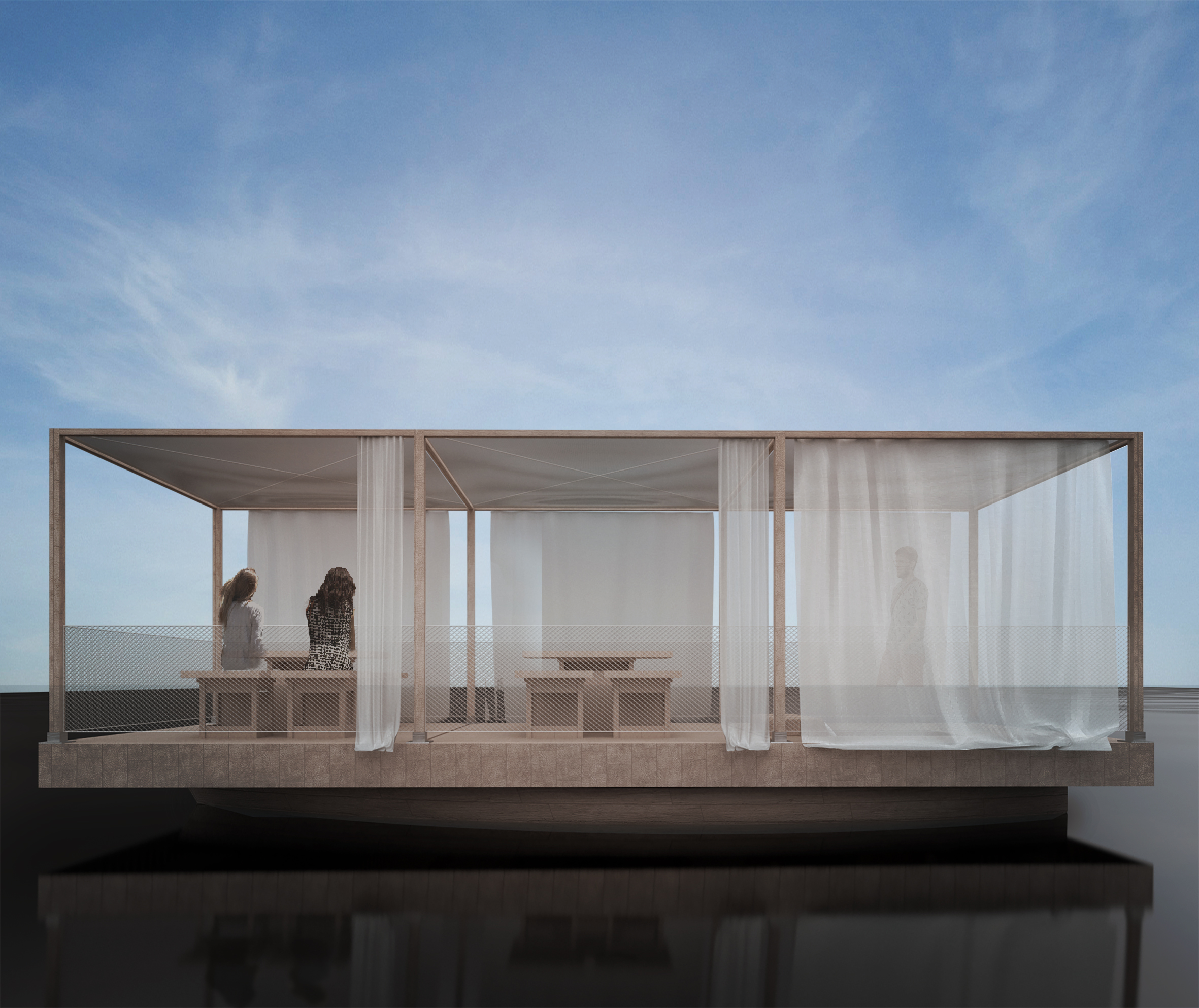A floating theater/school at the Aegean Archipelago
Harvard Graduate School of Design
Module 1 Studio for Spring 2021
STU 1322 Temporary and Ephemeral Structures
Instructor: Toshiko Mori

The reasoning of this project lies behind the greek law of the withdrawal of the fishing vessels. According to this law, fishermen can withdraw their boats in order to get a considerable financial support with the only condition being the dissolution of their boats. As a result, this policy forces a lot of fishermen to destroy their boats in order to get this financial grant. In other words, this means destroying not only the way of living of many families in the islands of Greece, but also damaging part of the history,


The main idea is to find a way to protect the traditional wooden fishing vessels, by re-purposing the function of the boats in order to be prevented from dissolution. In this way the fishermen will still get a percentage of the financial support, according to the policy and the fishing boat is temporarily transforming in to an itinerant structure. During the summer and daytime this structure will function as a classroom and during the evening hours will perform as a theater. Whereas in winter and autumn, when there is no fish shortage, the vessel will continue functioning as a fishing boat. The form of the deck is not corresponding to the curvature of the boat in order to intensify the juxtaposition between the linear form of the structure and the curved geometry of the vessel. This ambiguity is evoking the fact that the whole structure is actually a boat but you can not really see it. One can understand what is under only if it gets disassembled. During the evening hours, the classroom can be easily disassembled and by taking out the front beams. The liberated space can function as a stage for the theater, while the supporting spaces and the backstage are hidden by the curtains. Hence, the whole configuration works as a space for performance.


Light fabrics and textiles are transforming the module from a thin framework to an enclosed space.
The materiality of the module is consisted from wooden beams, straw fabrics, linen textiles, steel wire rope and fish nets. All of these components are coming together to assemble one full module which will ultimately function as a classroom. The only constrain is the location of the steering wheel, whereas the arrangement of the furniture can be adjustable and reconfigured according to the students’ needs. The furniture are fold-able elements: tables and chairs that can be folded and stored when they are not longer needed.



The overall ambition is reflecting into light materials, such as curtains that are operable in order to reveal or hide the backstage. The theater formation is discharged from the intention of having a rigid and very fixed stage, by allowing the waves to slightly move the boats. During the summer, in case of a storm the structure will need to return to the shore, get disassembled and be stored for future use.
The possible scenarios are based on the degree of urbanization of the specific territory; starting from an urban region near the port of Syros Island, to a less urban region of a village in Andros, or to an inaccessible beach in Milos. All of these scenarios are flexible configurations of different assemblies.
More modules assembled together can act as a stage and the rest of the boats and modules take the role of the audience. The ultimate aim is that the whole structure performs as an attracting point for the Aegean Archipelago which creates future possibilities of rethinking the sea as a way of living.